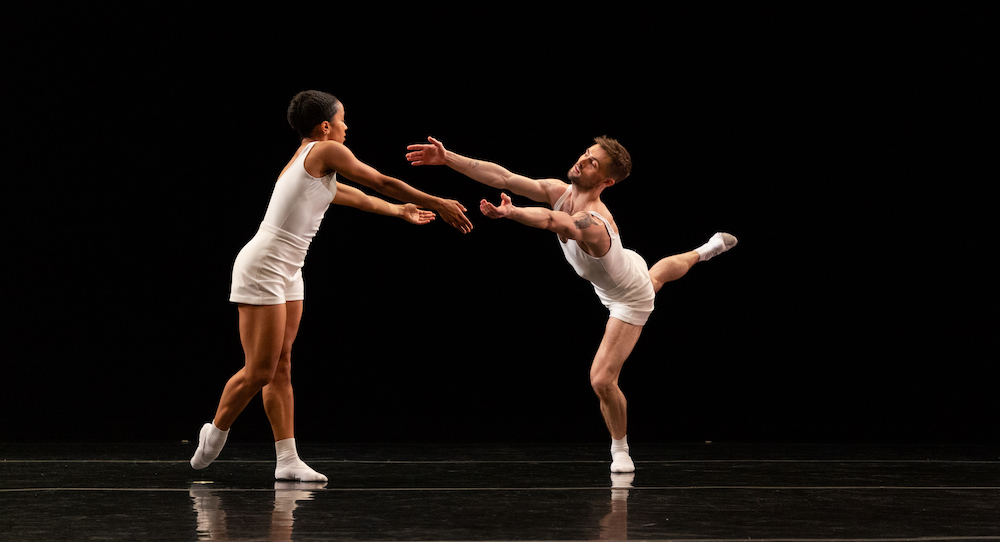The Joyce Theater, New York, NY.
May 7, 2024.
The Gibney Company performed a six-day season at the Joyce Theater in early May. This well-funded, reinvented, repertory company showed four works from three choreographers: Twyla Tharp, Yue Yin, and Jermaine Spivey & Spenser Theberge. In operation since 1991, the company perviously primarily showcased choreography by Gina Gibney, but in early 2020 (thanks to a significant cash donation), underwent a drastic reimagining and was reborn as a strict repertory company.
The program opened with Twyla Tharp’s Bach Duet, with a live five-person musical accompaniment. At only six minutes long, the inclusion of the musicians clearly showed how proper funding elevates dance. Sharing the stage with the two dancers, the result was a richer performance with the musicians live verses a recording. The dancers executed the work well, but when compared to videos of the original, one can tell how much modern influence made its way into the performance. It was clear that in the 50 years that passed since the original work premiered, modern/contemporary dance has developed a greater sense of clarity and depth of weight.
One good turn deserves another, as a second Tharp piece follows the first. The Fugue, choreographed in 1970, is an experiment in a 20-count theme with 20 variations. For three dancers, each represents musical registers of soprano, alto and bass. However, there is no musical accompaniment beyond the rhythm of the dancers’ feet on the stage, amplified by both their footwear and audio pick ups. Like Bach Duet, it’s danced with a 2024 tone, as everything must be by the very nature of evolution, but the essence of the work dominated the performance. One could almost see the mathematical structure, and most certainly feel its organic logic.
A Measurable Existence by Yue Yin came next and transported the audience to a fluid world of tension and release, both choreographically and with the relationship between the two dancers onstage. The movement, fluid but deeply intentional and powerful, became trancelike. The lights were bold, almost as if a third character and created a landscape that echoed the powerful qualities of the movement.
Lastly, we have Remains, by Jermaine Spivey & Spencer Theberge, a 30-minute work based in improvisation. The dancers used vocalizations and called out numbers which indicated a certain direction of choreography, theoretically allowing for the work for be different each time it was performed. Interesting to consider, the repetitive phrases the dancers spoke became grating over time, although the movement result was enjoyable.
Overall, the artists in Gibney Company are skilled and danced well. A contemporary repertory company is less common these days, and it’s nice to see a program with multiple choreographers represented. Despite the reimagining over the years, the company remains apt at bringing to life the works before them, and with an authenticity that fosters a pleasant audience experience.
By Emily Sarkissian of Dance Informa.















